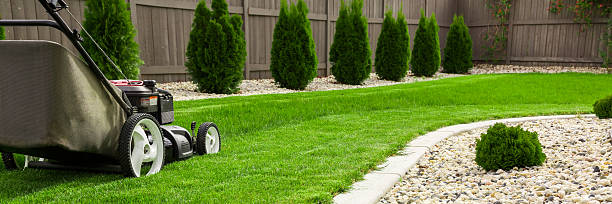
Landscaping is an essential aspect of any commercial property. It creates a welcoming environment for customers and employees and adds value to the property. However, when it comes to Superior Edge Landscaping in risky commercial areas, safety and security must be a top priority. Edge landscaping is an effective solution for commercial properties in risky areas. In this article, we will explore edge landscaping and its benefits for commercial areas in risky environments.
What is Edge Landscaping?
Edge landscaping is a type of landscaping that focuses on creating a barrier between the property and the surrounding environment. The barrier can be created using a variety of landscaping features, such as trees, shrubs, and hedges. The goal of edge landscaping is to create a natural barrier that deters intruders and adds a layer of security to the property.
Benefits of Edge Landscaping in Risky Commercial Areas
Increased Security
Edge landscaping can provide an additional layer of security to commercial properties in risky areas. The natural barrier created by the landscaping features can deter intruders and prevent unauthorized access to the property. This is particularly important for businesses that store valuable equipment or merchandise on their premises.
Enhanced Privacy
Edge landscaping can provide a degree of privacy for commercial properties in risky areas. The natural barrier created by the landscaping features can prevent passersby from seeing into the property, which can be especially important for businesses that require a high level of privacy, such as law firms or medical offices.
Improved Aesthetics
Edge landscaping can improve the aesthetics of commercial properties in risky areas. The landscaping features can be used to create a visually appealing environment that is welcoming to customers and employees. This can be especially important for businesses that rely on foot traffic, such as retail stores or restaurants.
Reduced Noise
Edge landscaping can reduce the amount of noise that enters the property from the surrounding environment. The landscaping features can absorb sound waves and create a more peaceful environment for customers and employees. This can be particularly important for businesses located near busy roads or highways.
Increased Property Value
Edge landscaping can increase the value of commercial landscapers near me properties in risky areas. The natural barrier created by the landscaping features can enhance the property’s security and privacy, which can be attractive to potential buyers or renters. In addition, the enhanced aesthetics created by the landscaping can make the property more appealing and increase its value.
Tips for Implementing Edge Landscaping in Risky Commercial Areas
Use the Right Landscaping Features
The key to successful edge landscaping is to choose the right landscaping features for the property. The features should be dense and tall enough to create a natural barrier. Trees, shrubs, and hedges are all good options for edge landscaping.
Choose Low-Maintenance Features
When choosing landscaping features for a commercial property, it is important to consider the maintenance requirements. Choose features that are easy to maintain and require minimal upkeep. This will help to ensure that the landscaping remains effective over time.
Work with a Professional Landscaper
Edge landscaping can be a complex and time-consuming process. It is important to work with a professional landscaper who has experience in designing and implementing edge landscaping for commercial properties in risky areas. They can help to ensure that the landscaping is effective and meets the needs of the property.
Consider Lighting
Lighting is an important aspect of edge landscaping in risky commercial areas. The landscaping features should be well-lit to deter intruders and improve visibility. Motion sensor lights can be particularly effective, as they can detect movement and activate the lights.
Implement a Maintenance Plan
Regular maintenance is essential for the long-term effectiveness of edge landscaping. Implement a maintenance plan that includes regular pruning and trimming of the landscaping features. This will help to ensure that the features remain dense and effective over time.